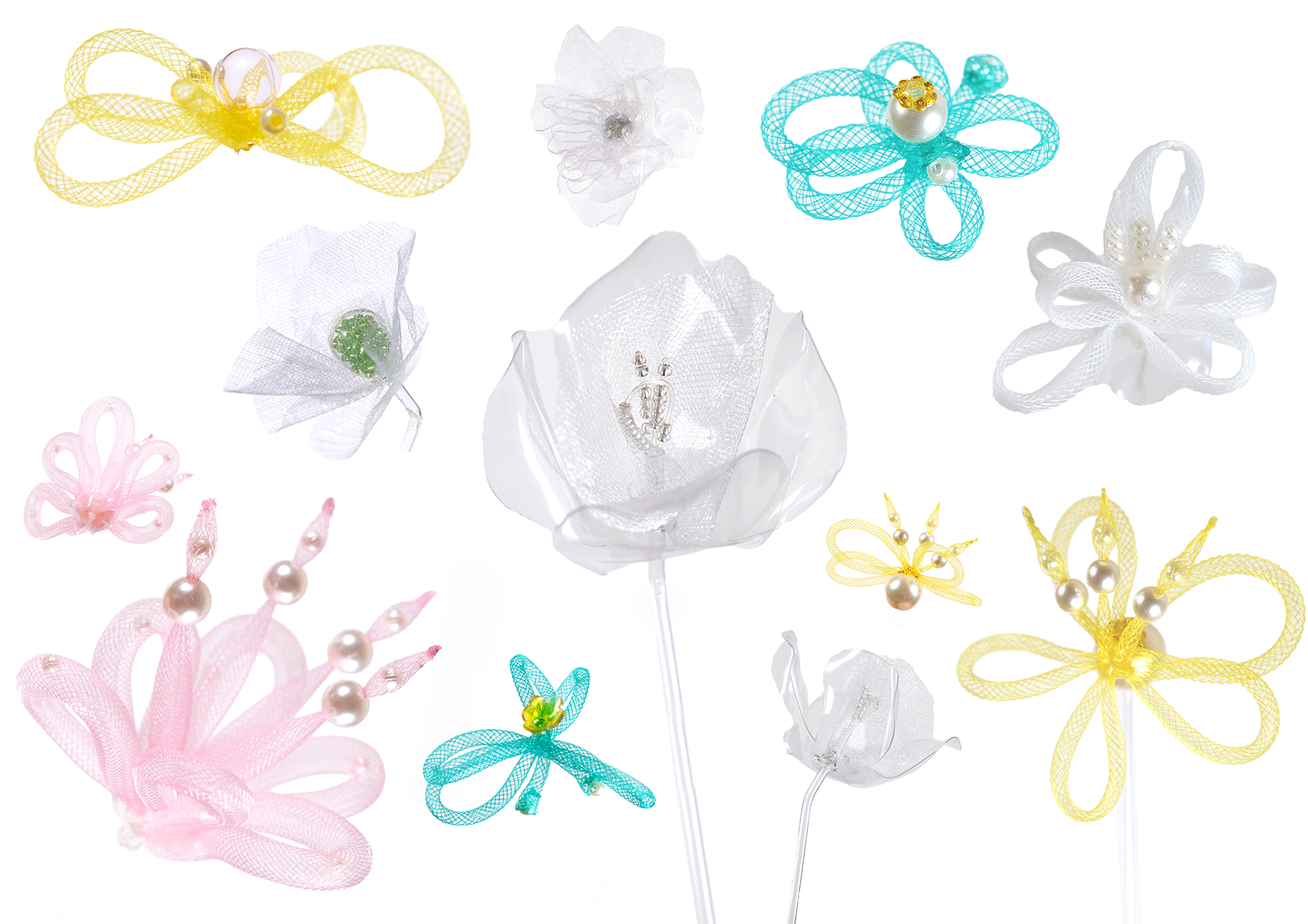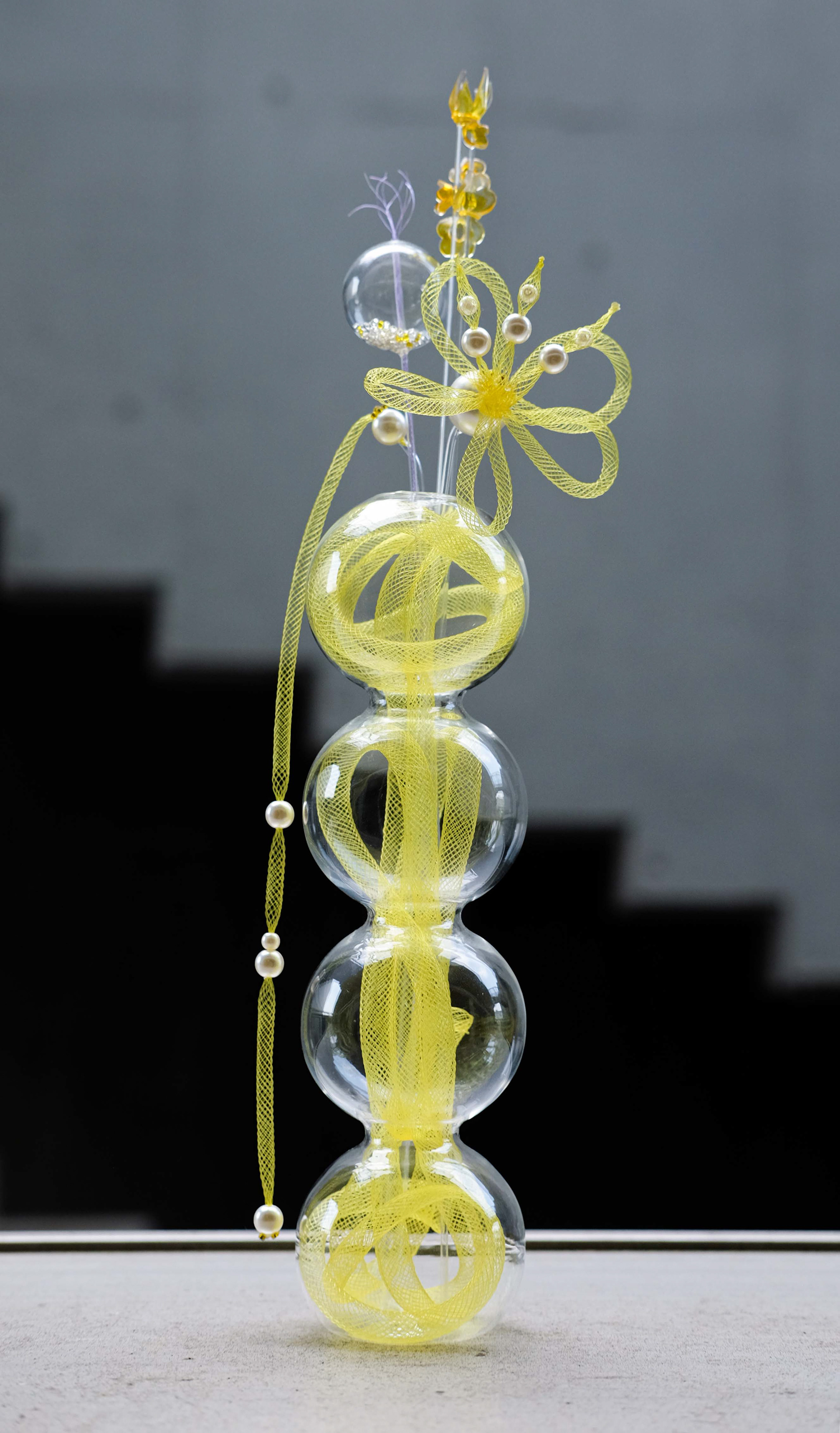安価で大量生産されるプラスチックは、人工自然という新しい生活環境を構成している。しかし、華やかな景観の自然とは異なり、透明感のある美しさが特徴です。さらに、自然界に存在しない色を提供することも可能です。しかし、工業生産されたプラスチック製品は、ほぼ生命力がなく、均一な外観をしているため、私たちは無意識のうちにプラスチックが創造性を育む可能性はないと思い込み、その美しさを無視するようになっている。
プラスチックは常に環境にやさしくない材料と考えられているが、問題は、私たちが使い捨てプラスチックが、多くのゴミを生み出していることである。 プラスチックの美しさを認め、長く使うことができれば、ゴミの発生を減らすことができるかもしれない。
この作品では、プラスチックの透明な質感と植物の生き生きとした姿に着目し、太陽の光を浴びる時の葉や花びらの透きとおるような透明感を再現する。
Inexpensive, mass-produced plastics constitute a new living environment: artificial nature. However, unlike nature in its gorgeous landscapes, it is characterized by its transparent beauty. Moreover, they can provide colors that do not exist in nature. However, because industrially produced plastic products are nearly lifeless and uniform in appearance, we subconsciously assume that plastic has no potential to foster creativity and ignore its beauty.
Plastic has always been considered an environmentally unfriendly material, but the problem is that our disposable plastics create a lot of waste. If we can appreciate the beauty of plastic and use it longer, we may be able to reduce the amount of trash generated.
In this work, I focus on the transparent texture of plastic and the lively appearance of plants to recreate the translucent transparency of leaves and petals when bathed in sunlight.
Plastic has always been considered an environmentally unfriendly material, but the problem is that our disposable plastics create a lot of waste. If we can appreciate the beauty of plastic and use it longer, we may be able to reduce the amount of trash generated.
In this work, I focus on the transparent texture of plastic and the lively appearance of plants to recreate the translucent transparency of leaves and petals when bathed in sunlight.





